Japanese Maples! in Colorado!
Hi there,
I've posted on the Maple forum and gotten some very hepful suggestions on JM in my zone, but I'd like to hear more from people growing them at altitude (I live near Denver, 5280). I am concerned about our intense sun. I have a spot that's pretty wind protected, but only a little sun protected.
In particular, I'm looking for something small, preferrably more tree-like than bush-like. Beni Otake has been recommended, but I'm worried about it's fine, red leaves in our sun. Otherwise, the plant is a perfect size.
I am considering Full Moon Maple, Japanese Maple 'Autumn Moon' (Acer shirasawanum) , Acer japonicum 'Green Cascade' and a few of the Sango kaku varieties ('Fjellheim', 'Aka kawa hime' or 'Beni Kawa'). Some of these end up too large for my spot, though, and others (Sango Kaku var.) may not be hardy enough (some are listed zone 6 at davesgarden).
I've heard green leaved, bigger leaved varieties are hardier, which is why the japonicums are on my list (but they get too big!).
What is anyone else growing in a similar climate/altitude--particularly small JMs? What has worked, or not worked?
Thanks so much.
Christina
Comments (30)
shudavies
17 years agoI have a whopping one year of experience: I planted a 'Red Dragon' JM (Acer palmatum) in a primo, partly shaded (mostly dappled in the AM/full shade in the PM), wind protected spot with good soil that I normally flood once a week with irrigation water. But this plant has pretty finely dissected leaves, and as I was warned, there was some scorching and partial browning of the older leaves as the summer progressed. I also experienced about 1/4 to 1/3 die back after this winter. But maybe some of this might be normal in the first year.
In any case, my neighbors cut down their huge blue spruce this winter, and that was part of the wind protection and shade I had for that spot. So I moved the JM to a full shade location for this year's attempt to get it to grow, hopefully scorch-free.
Finally I will note that I am at 5300', but we get a little more sunshine and are a little bit hotter than Denver. 'Red Dragon' is smaller than what you want, but I wanted something I could nestle into a protected spot.
bpgreen
17 years agoMy main concern would be how well they're adapted to alkaline soils. I'm assuming your soil is as alkaline as mine.
I've got a silver maple in my lawn, and it suffers from iron chlorosis. Trust me, it's much easier to plant something that is adapted to the soil than to try to adapt the soil to the plant.
Related Professionals
Clemson Landscape Architects & Landscape Designers · Rossville Landscape Architects & Landscape Designers · Southfield Landscape Architects & Landscape Designers · Burlington Landscape Contractors · Canton Landscape Contractors · Essex Landscape Contractors · Glendale Heights Landscape Contractors · Harrisburg Landscape Contractors · Morrisville Landscape Contractors · Newberg Landscape Contractors · Oakland Landscape Contractors · Soddy Daisy Landscape Contractors · South Lyon Landscape Contractors · Markham Landscape Contractors · West Jordan Solar Energy Systemsshudavies
17 years agoYou can buy a do-it-yourself testing kit in the garden store. I mail-ordered a $30, multi-purpose electronic probe thing that tests for PH. It also said it tested for fertility, but when I got it I realized it only tests for Nitrogen content. It's OK but I don't especially recommend it.
You could probably grow up to a 8 foot or so Japanese Maple in a half-barrel or other large container. Then you'd have to feed and water more often. Plus the soil would freeze more, so you'd want one on the hardier side. But my Red Dragon is looking great, and if I didn't have good soil, I'd certainly say it would be worth it.
stevation
17 years agoI've grown four JMs in Utah at about 4600' altitude. The only problem, I think, has been the soil alkalinity. I have a plain green one that is doing well in full sun (go figure!) and a very nice looking but inexpensive red variety (Acer palmatum atropurpureum) that has done EXTREMELY well on the west side of my house with plenty of afternoon sun. These inexpensive red ones turn green during the summer, but have excellent red leaves in spring and fall. I actually like the changing color of the leaves.
However, I tried an expensive red one (Bloodgood variety) along with another plain green one in a shaded area in the backyard, and sadly, both died. I'm surprised the shaded ones did worst, but I think it may have been a combination of bad soil and perhaps too much moisture. I didn't think it was too wet, but maybe it was wetter down deep. That area had a sandy loam "topsoil" that is probably a foot deep, I think the loam may have been too lean in nutrients for them, and when the roots got to the heavier native soil below, it might have been too moist. They did show signs of cholorosis, and I tried treating the area with soil sulpher and ironite, but they only declined faster. I still have the Bloodgood in the ground, hoping that a few buds will come out this summer, but nothing is happening so far.
Good luck! These trees are definitely worth a try, because they're so graceful, but I'd stick with inexpensive varieties in our alkaline soils.
coloradobird
Original Author17 years agoShudavies, thanks, I'll get something at a garden store and test my soil.
Do you grow your Red Dragon in a container? Do you keep it in sun or shade (or both)? What do you do with it in the winter? If you're growing it in the ground, what kind of environment is it in--sun, shade?
Stevation, how long have you had your two trees that are doing well? Do you know what the green one is? Is it a japonicum? I am considering a japonicum rather than palmatum (but haven't really decided), since they're supposed to be hardier. (The problem is, they also seem to be bigger.)
I need something small for my spot. Or I may go the container route, though I am concerned about winter time.
I agree they're worth trying, and I'm not going to spend a lot on big plants, just in case. Now if I could just make up my mind on what to get. . .
Thanks again,
Christina
stevation
17 years agoChristina,
My two JMs have been in the ground for almost five years now. My green one is simply an Acer palmatum.
I noticed Costco in Orem, Utah had some nice Sango Kaku maples this week for $40. They are about three feet tall. I'm tempted to get one. They have such cool bark -- the red contrasts nicely with the green leaves.
Steve
sagebrushred
17 years agoI'd buy the Sango Kaku if I were you. That is an excellent price and of all the JM's that I've tried this has done the best. JM's don't like my soil and I've killed every one except the Sango kaku and the one that started growing from the root stock of a weeping, disected form I killed.
ljrmiller
17 years agoI don't know what would be best for your area, but alkaline soil is definitely NOT a problem for my JM's. I have some in heavy clay soil with as much organic material as I can dump on it annually, and I have some in those big cedar planters. I give them all a pinch of Ironite a pinch of slow-release Azalea fertilizer once a year. And I DO mean a pinch, no more.
The dissectums are all doing fine, especially the cheap ones I got at big box stores (two of them, one green, one red). The "plain" A. palmatum I got from Forestfarm is doing fine, as is an unnamed dwarf kind I got from a local nursery. Sango Kaku is doing splendidly--also obtained inexpensively from a big box store. My fanciest ones have been the slowest-growing: Tiger Rose, Rubrum Atrolineare and a variegated one with a name that just flew right out of my head. They all look good, though. Acer shiwarasanum and Acer campestre (?) are also doing well, growing vigorously.
If I hadn't put them all in a part-to-full shade area extremely sheltered from the wind, I might be able to tell you more about hardiness, but they are all living in this little plant paradise in my back garden, and not subject to a lot of weather abuse.
Lisa
Skybird - z5, Denver, Colorado
17 years agoYou can have a soil test done by the CSU Extension Service for $18. I've never had one done, but it's my understanding that it's one of the best and most accurate ways to get it done. Here's a link to the CSU page with soil testing info. I couldn't get the link they show to work, but there's a phone number you could call for additional info. I think you'll have trouble growing a JM that you'll be truly happy with in our climate---but---when it comes to plants, ANYTHING is worth trying!
Good luck,
SkybirdHere is a link that might be useful: CSU soil testing info
coloradobird
Original Author17 years agoI bought a soil testing kit at Lowe's, and it seems my soil is not as alkaline as I thought, testing toward 6.5, in some places a bit closer to 7.0. I don't think it's the most accurate test in the world, but it's probably close enough for my present needs.
Thanks for that link, Skybird, if I hadn't already bought the kit, I would've done that instead. I may do it later. The Extension Service didn't even enter my mind--I should try to remember them at times like this!
Steve, I also really like the Sango Kakus. I haven't seen any JMs at our Costco here.
After all my talk about not getting a palmatum, that's exactly what I got (two, even!). I thought the year-guarantee at a local nursery was a good thing, so got a Sharp's Pygmy, which is supposed to be pretty hardy. Then, I saw a little Beni Otaki on Ebay for a great price, and bought that, too! Next, year, if I'm kicking myself for going down that road, I'll be buying the Autumn Moon I was originally going to get for its hardiness.
Christina
bpgreen
17 years agoYou're probably right that the soil test kit isn't the most accurate, but you're also probably right that it's probably close enough for your purposes. I think they work best if you use distilled water, but I can never remember whether tap water can make the test more acidic or more alkaline (probably the latter).
If your soil is in that range, it's not nearly as bad as I feared, and you may have good results. I'd still encourage you to be proactive and use lots of organic matter every chance you get. And keep an eye out for chlorosis. If the leaves start to turn yellow, start using acid loving fertilizer and/or get a bulb augur, drill holes around the drip line and add soil sulphur. The sulphur takes months to begin working, so it helps to catch it early.
coloradobird
Original Author17 years agoThanks for the info on what to look for re: chlorosis. I appreciate that. I want to take good care of these babies! For what it's worth, I did use distilled water for the soil test because I had some around I use in a fountain.
Wish me luck--this weekend is planting time!
Christina
kvolk
17 years agoI would doubt your soil pH. I am guessing that where you are you have got to be above 7. Alkaline soil is not kind to JM but not necessarily the kiss of death either. My soil is 7.5 and I have 24 JM or relatives in the yard. I must admit that over the years I have lost 5 of my maples however. The japonicums will definitely be hardier and with some judicious pruning you can keep them as small as you want. How do you think that bonsai remain small? Acer japonicum aconitofolium will not get too big and will give you some of the most gorgeous fall color that you could ever ask for. A. mandshuricum will also give you better hardiness as will the pseudosieboldianum. The pseudoseiboldianum has beautiful fall color but it looks like mine are getting chlorotic. The sulfur has not helped. I am turning to chelated iron but I am afraid that it is going to be a loosing battle.
The keys to growing JM is location, location and watering. Plant them in a sheltered location and your zone 5 becomes zone 6 and plant them in an exposed location with lots of wind and your zone 5 quickly becomes zone 4. THere is a guy in Canada growing them in zone 3 but he mulches heavily and covers them with styrofoam boxes each winter. I have a generic red palmatum on the east side of my house right next to the front porch and under the eaves that has been there for 18 years now. I may be in the process of loosing it to verticillium though. I had to take out the main leader and some branches this spring.
JM don't do well with drought but they MUST have good drainage. I build up low berms for all of mine. I dig the hole wide and about 1/2 the depth of the root ball and then build up the soil around it. Water consistantly--if you keep them a little on the dry side they will do OK but be consistant.shudavies
17 years agoThis has been an interesting discussion thread. I had thought that the conventional wisdom was that due to our low humidity and intense sunshine, all JMs required dappled to full shade. Now I read of people growing some of them in the sun like an ordinary maple tree. I also read in the Sunset Western Garden book that ordinary own-root JMs often do better than the fancy grafted 'name brand' varieties, so maybe this is the key.
My 'Red Dragon' JM is going to stay in the ground in its pampered shade spot, but I just might have to try a larger, Plain Jane variety in another spot...
yojimbo
16 years agoGreetings! I noticed this thread on Japanese maples in Colorado and wanted to add a few observations. I live a bit north of Denver (Thornton) and have turned my backyard into a Japanese garden over the last 6 years. Naturally, I was interested in the feasibility of having JMs in my own garden and so did some experimentation on a few species, both from local nurseries and via online for more exotic species. Currently, I am growing two Japanese species: a fernleaf fullmoon maple and a rough-bark Acer palmatum "arakawa". Both have shelter and shade, which brings up a few comments: 1) because of our intense sun, the small-leaved varieties (aka lace-leafs) don't fare particularly well unless given mostly shade; minimal morning sun is tolerable, but blazing afternoon sun won't work; 2)all JMs will suffer in our intense spring and winter winds, so a sheltered spot is a must; 3)JMs prefer a moist, organic, rich acidic soil, all of which, alas, Colorado is not. Therefore, expect to amend your soil highly and do some regular high-maintenance watering. Beginners to these maples should stick with an easier species, such as "Bloodgood", as the Denver Botanic Garden has.
(You can learn a lot about feasible plants in this area by observing what the Botanic Garden found to work in their Japanese garden, BTW).That said, the effort is surely worth it, given the needed shelter and shade. The colors of Acer palmatums (hardier than other varieties) are spectatular in the Fall.
shudavies
16 years agoMy second-year report on my miniature 'Red Dragon' palmatum is pretty good: very little dieback; not too much scorching last summer in its mostly shaded location; putting on nice growth again now. Not bad for my high desert climate, given how finely dissected its leaves are. I read somewhere that you can spray antidessicants on the leaves in the summertime if you want - has anybody tried this?
yojimbo
16 years agoHi shudavies,
Red Dragon is supposed to have a nice blackish trunk. Not sure how large yours is, but I was wondering how the trunk looks in winter, once the leaves have fallen off. Do you get a corky texture, like some other Japanese maples? My palmatum "arakawa" is well-known for the corky type of bark (also black), but it's too small and I don't see it yet.
tjchermack
15 years agoI just planted my bloodgood. It's about 7 ft tall. This area gets morning sun, and is then in the shade from about 1 pm to 6 pm, and then the setting sun really brings out the colors.
This has been in the ground only for a few days now. I'm a little concerned about our winter winds, and I will likely build some kind of frame / wind screen to put around it over the winter time until I know if it is liking its space.
The other concern I have is about the soil. I did everything the nursery told me to, but I'm still a little worried about the possibility of the soil not draining well enough and drowning this beautiful tree. Any advice on the signs that the soil is too wet?
You can check out the pics here:
http://gallery.mac.com/tjchermack#100026Otherwise, this tree really gives the look I am going for in my garden and I think it is just beautiful! I really hope it works!!
Tomstevation
15 years agoNice looking garden you have there! I would just add that I think the thing that has helped my two JMs the best is lots of mulch over the roots to keep them cool in the summer sun. I put something like 3" of compost on them as a mulch, and after doing that, the red one in particular just took off with healthy growth. They're still doing great after almost 7 years now.
tjchermack
15 years agoThanks Stevation -- sorry for the delayed response. This forum doesn't seem to be terribly busy so I forgot to check. Anyhow, i have taken your advice and added a three inch layer of mulch mixed with compost around the base. We had some pretty bad winds here a few weeks ago and the leaves took a little bit of a beating. The spot isn't as protected from wind as I had hoped. Any advice for how to address this over the winter? Do people ever cover the trees in winter?
I've also caught the bug and have purchased another Japanese Maple -- a Sango Kaku - only about 5 ft tall. This one I've decided to put in a large pot so I can move it out of the wind. We'll see how it goes...
Thanks again for your advice!!
Tomrmkitchen
15 years agotjchermack -- your maple looks wonderful! I am so encouraged: we moved here (Superior) last year from San Francisco where we had a grove of Japanese maples, and my husband is Japanese so we really have a vested interest. We'd been told "nope, can't have Japanese maples here" but after reading this thread and seeing your photos I'm encouraged ....
Keep us updated!
coloradobird
Original Author15 years agoWow, lots going on here, I didn't realize people were talking away about the JMs!
My Sharp's Pygmy has been in the ground for two years now and is doing great! It's surrounded by fence to the south and west. Gets almost no wind as it's a small yard and there's a patio and garage wall about fifteen feet to the north. In the hottest summer, the leaves get a little crinkly at the tips but overall, it looks great.

tjchermack
15 years agoHi rmkitchen (and everybody else, of course...) My bloodgood is doing pretty well, but I have to tell you that about a week after I planted it, we got some 70 MPH winds here in Fort Collins, which I was unprepared for. The leaves on the tree took a little beating, but it is clearly adapting to the spot and continues to put on new growth. So, I would say that in my limited experience, the key to Japanese Maples in Colorado is to protect them from the wind.
My bamboo seems to be thriving though... go figure!
Since those heavy winds, I have planted 4 upright junipers (skyrockets) that I intend to screen the Maple from the wind. Also, as my neighbor's trees mature, that will also help. I will post some updated pictures later this week.
Finally, I have really caught the bug and have purchased an Inaba Shidare, a Sango Kaku, and an Emperor I. These I am keeping in pots until all of the windscreen trees grow a bit (I'm assuming a couple of years will do the trick...), and they are doing REALLY well in pots. I keep them on the east side of the house where there is little wind and full sun until about noon, and they are thriving.
Coloradobird, your spot looks great! That Sharps Pygmy is really attractive!!! Creating a nice little microclimate is the way to go here. Well Done!! It has been a hot summer and my Bloodgood leaves have bronzed for sure, but it's still beautiful.
Stay tuned for pictures...
Tomcoloradobird
Original Author15 years agoTom,
Glad to hear your Bloodgood is doing well! My Pygmy has been putting on quite a bit of new growth, which I'm happy about.
What is your plan for overwintering the potted JMs? I had one in a pot that died because I didn't have a good place to keep it in the winter.
Yes, pictures. . . !
tjchermack
15 years agoWell, my japanese maples in pots are definitely experiments. I learned a little secret some years ago when I worked for a landscaping company -- buy the pot a little bigger than you might, and line it with bubble wrap. Yep -- literally tape bubble wrap to the inside of the pot. The company I worked for used this method and did a lot of container gardening for high end clients. They didn't lose a tree while I was there...
I'm also using plastic pots as they are better for insulation in the winter and cooler in the summer. Fill the bottom with rocks, sand, etc.. for drainage, and then I added a high quality potting soil. They are all growing fast!
Granted, mine have not seen a winter under my watch yet, so my plan this first winter is to bring them in the garage and wrap the pots with blankets and other insulating items. Not ideal, as I would love to keep them outside, but I think they are still a little young and fragile.
There is also a pdf document on growing Japanese Maples in pots here:
http://www.mountainmaples.com/ART_plant_containers.phpbut they don't talk about bubble wrap [smile].
Tomcoloradobird
Original Author15 years agoTom,
Wow, interesting idea. I certainly never would've thought of using bubble wrap.
Is your garage unheated? My problem is we have a heated garage and even turning the heat all the way down still keeps it too warm to overwinter a tree.
I hope you are able to keep yours alive through the winter. They're so lovely, it's a bummer to lose one.
Thanks for sharing your inside secret. :)
tjchermack
15 years agoYes, my garage is unheated, so I'm hopeful. Many nurseries here sell Japanese Maples and I know they overwinter them by wrapping them and actually laying them down on the ground huddled together with other trees. I hope they survive -- too much fun!
Here is a photo update where you can see the bronzing and some leaf scorch on the bloodgood. There are also pictures of the bamboo progress, and the maples I have in pots:
coloradobird
Original Author15 years agoTom,
Wow, lovely. Your yard looks great (I love those big rocks!). It'll be wonderful if you can get your JMs to thrive. After everything I had read, I was very skeptical about growing them here and having them do more than just survive. But my little Sharp's is doing so well---much better than expected. Not even any crinkly leaves so far this summer.
Your bamboo looks great. A couple of years ago, I did some research on bamboo, too, and decided not to bother. I have such a small yard.
Thanks for sharing the pics!
tjchermack
15 years agoA little update -- I've gone a little crazy over here, although by what I have read on the Maples forum, I may just be getting started...
I now have 7 Japanese Maples, 3 in pots, and 4 in the ground. These are the cultivars I'm growing:
--Bloodgood
--Emperor 1
--Seiryu
--Butterfly
--Orangeola
--Inaba Shidare
--Sango KakuI'm happy to report that my bloodgood is putting on all kinds of new growth and seems to be adjusting after an early summer windy week that turned its leaves brown. Also, I'm growing my Orangeola, Butterfly and Seiryu in full sun and they are also all putting on new growth.
I'm planning to wrap the trees that are in the ground to protect them from our winter wind. I have planted a row of Junipers to protect them, but these are not quite tall enough yet. I am interested to hear from other people in Colorado what they do for the winter, which cultivars work in what locations, etc...
I have generally found people at nurseries to be skeptical, and most of the information available to be quite conflicting in terms of conditions, etc... and I realize that the environments vary so much that this is naturally the case. However, I think those of us willing to experiment in Colorado, might learn a lot from each other experiences.
I'm also looking forward to shaping over the winter. I have finally picked up Vertrees Japanese Maples book, and another by Hobson about pruning and shaping called "Niwaki". Both of these are excellent resources, and while I had heard about Vertrees (THE book on Japanese Maples) the other was new. Niwaki is a fantastic explanation for pruning, shaping, and working with your trees to achieve the effects of the Japanese Gardens. In fact, it explains exactly how to do it...
Anyhow, I'm also excited that I have 4 seasons of gardening rather than the 2-3 of the standard western garden. Fun!
I look forward to hearing updates from any of you willing to share.. and I'll post some pictures of everything above laster this week.
Tom
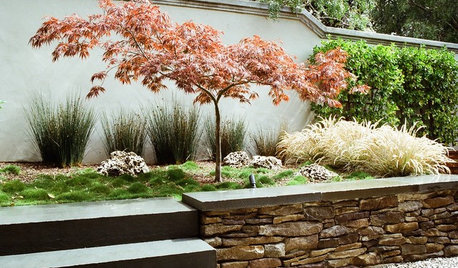




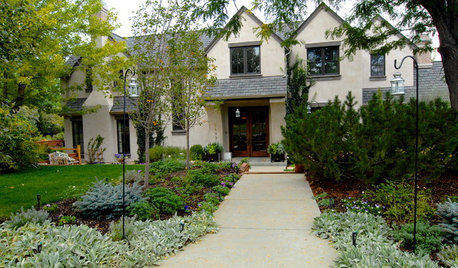
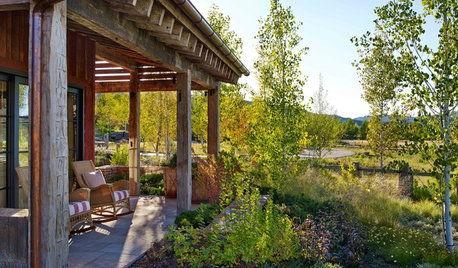
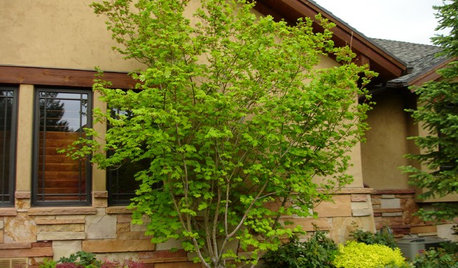
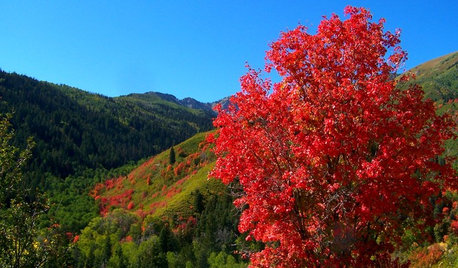
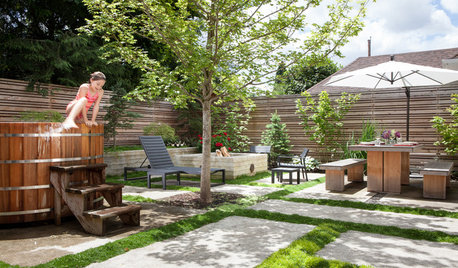







coloradobirdOriginal Author